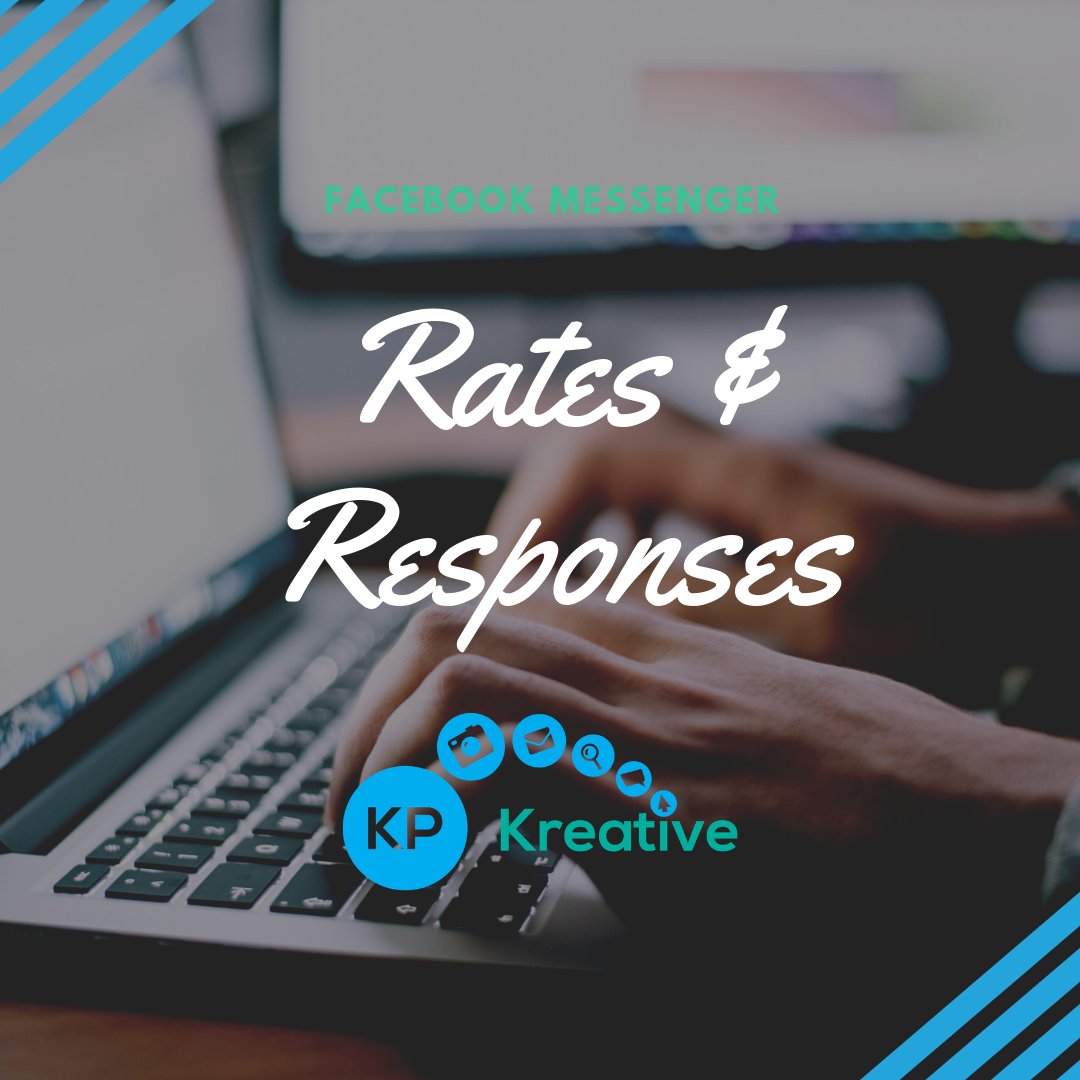
As you probably already know, Facebook messenger is a great tool for businesses that can help facilitate growth. Facebook Messenger allows business owners to make stronger connections with customers by building relationships through conversation. According to a survey conducted by Facebook, 69% of users say that being able to message a business helps them feel more confident about the brand.
Messenger has made some updates over the past several months, including offering messenger bots to automate responses being sent from your Facebook page. (If you’d like tips to help improve your messenger bot, check out this blog post).
An important part of understanding Facebook messenger is knowing how your rate and response times are measured. These measurements are based on how consistently and quickly you and other Page managers respond to messages. When you have a fast response time and high response rate, people who visit your page will see a Very responsive to messages badge. Here’s what you need to know about how Facebook measures your rate and response time.
Response Rate
Your page’s response rate is the percentage of messages that you or other page managers respond to. A message counts toward your Page’s overall response rate if it is the first message that a person sends to your page after neither you or the sender have sent messages for at least 24 hours. The overall response rate of your Page is based on messages received in the last 30 days prior to the last message that counted toward your response rate. For example, if it’s November 6th and the last message your Page received was on October 30th, then your Page’s response rate is based on messages that occurred from October 1st to October 30th.
If your Page has received less than 10 messages in this span of time, your response rate will be based on the last 10 messages it received. If your Page has received less than 10 messages total, it will be based on all messages ever received.
Response Time
The response time of your page is what gives people an expectation of the amount of time it will take you to respond to their messages.
Just as with response rate, a message counts toward your response time if it is a response to the first message a person sends to your page after neither of you have sent messages for at least 24 hours. So, if you are in a conversation with someone and you respond to each other within 24 hours, that will not count toward your response time. It seems to reset for a conversation after 24 hours of no contact.
The response time of your page is an average of the fastest 90% of response times to messages received in the 30 days prior to the last message that counted toward your response rate. For example, if it is November 6th and the last message your Page received that counted was on October 30th, then your Page’s response time is based on messages that occurred from October 1st to October 30th.
Just like with your Page’s response rate, if your Page has received less than 10 messages in this time span, your response time will be based on the last 10 messages. If your Page has received fewer than 10 messages in total, it will be based on all messages ever received. Visitors to your Page will be able to see your response time when they visit your Page or when they open a chat with your Page in Messenger
What messages are included in my Page’s response rate and time?
Any message replies that come from your Page manually or via API (like from a bot) are included in the calculation of your Page’s response rate and time.
What messages are not included in my Page’s response rate and time?
The following types of message are not included in the calculation of your Page’s response rate and time:
- Away messages
- Instant replies
- Messages people send when you’re away from your Inbox
- Messages that you have marked as done or marked as Spam
- Messages people send within the first 24 hours in response to a Page-initiated message, such as a private reply to a comment or recommendation or a broadcast
Understanding how Facebook messenger measures your Page’s rate and response time will help you create faster and stronger connections with those following your brand. Do you have more questions about Facebook messenger? Let us know in the comments!
Related Posts

How to Respond to Negative Reviews With Positivity
Consumer commentary and reviews abound on the Internet, and some of these comments are negative. This can make it sometimes difficult for business owners to decide how to respond to these comments and when to let them go. Knowing how to respond to negative reviews and customer complaints is crucial. Check out our tips for curating positive social media responses:

Social Media Platform Trends to Inform Your 2022 Marketing Strategy
Is your social media marketing prepared for 2022? Here are some important trends you need to know about, which you can use to inform your planning with confidence.

The Importance of Social Media Insights
You don't need to be told in 2022 that brands gain value from using social media. Yet one aspect of social media is particularly potent — social media insights. You can acquire social media insights by analyzing your content on the channels you're already using. These insights allow marketers to target audiences better and refine content strategies. Let's look at why insights are important and how to use them.


